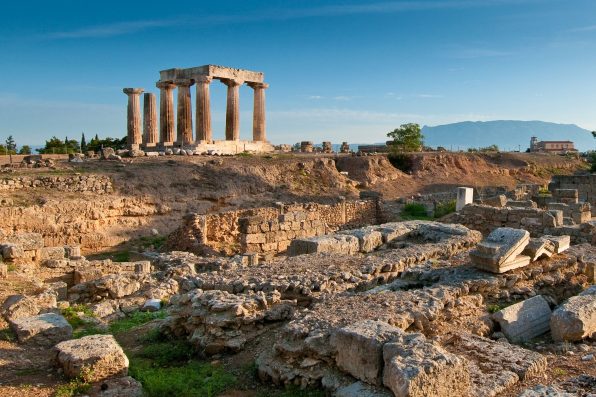The Site Of A 1,600-Year-Old Prison Was Found In Greece, Adding To The Mere Handful Of Prisons From Ancient Roman Times That Have Been Discovered

In Corinth, Greece, the site of a Roman prison has been identified by an archaeologist named Matthew Larsen.
It is one of a handful of prisons to be discovered from ancient Roman times. He determined that a prison once stood in the location due to inscriptions carved into the floor of the ruins.
According to Matthew Larsen, an archaeologist and associate professor at the University of Copenhagen, historical records indicate that almost every Roman town contained a prison. Yet, evidence of Roman prisons has been minimal and difficult to detect.
The prison dates back around 1,600 years ago, when the Roman Empire was in control of the area, and many individuals had converted to Christianity.
Larsen was able to identify the prison by studying records from an excavation of the site back in 1901 and examining the site and its graffiti for himself.
On the floor of the prison, there were inscriptions written in Greek, including pleas such as, “May the fortune of those who suffer in this lawless place prevail. Lord, do not show mercy on the one who threw us in here.”
The flooring was covered with cracks. It is unclear whether the prison used to be at another location and whether the flooring from it was reused for this site.
The graffiti was written within the boundaries of the cracks, suggesting that the flooring already contained cracks at the time it was installed.
In addition, the east chamber of the prison held the remains of jugs called “olpai,” lamps, and a small latrine in one of the chambers that may have been used by the prisoners or the guards. The jugs and lamps would have provided water and light for the prisoners.

avorym – stock.adobe.com – illustrative purposes only
Larsen noted that the conditions in the prison were dreadful, which was made clear by the graffiti the inmates wrote.
No existing records explain who the inmates were or why they were imprisoned. The only fact known for sure is that they were angry about their situation.
“You get the sense that they’re in a very dark space, that they cannot be given a hearing,” Larsen told Live Science.
One inscription reads, “Godbearer, repay [punishment given by] Marinos, the one who threw us in here and made us spend winter.”
Another was a plea for release, stating, “Lord God and pure justice, ransom from this place the two brothers. Christ, safeguard both Boudis and John.”
Several of the etchings sought vengeance against those who imprisoned them. For example, someone wrote, “Lord, make them die an awful death.”
A few of the carvings were depictions of game boards that show how the prisoners must have played games to pass the time.
While we may never know the full background of the inmates, the graffiti they created at least offers a glimpse into the daily lives and mental states of prisoners from ancient Corinth 1,600 years ago.
Sign up for Chip Chick’s newsletter and get stories like this delivered to your inbox.
More About:News